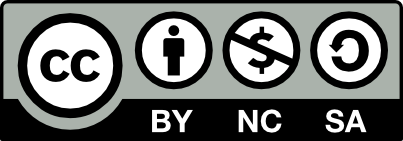Please use this identifier to cite or link to this item:
http://hdl.handle.net/10609/135086
| Title: | Regeneració urbana dels barris fruits del boom immobiliari dels anys 1960 i 1970, a partir de la millora dels seus espais públics. El cas del barri Centre de Salt |
| Author: | Quiñones Pujadas, Sergi |
| Tutor: | Iglesias Costa, Mariela |
| Abstract: | The neighborhoods that emerged in the 60s and 70s in Salt, as well as in many Catalan municipalities, have to be understood in the logic of a Franco dictatorship where speculation and the search for profitability, led to try to create the maximum economic return in the minimum land area. They are very dense neighborhoods, with a high concentration of population in tall buildings, surrounded by small streets destined almost exclusively for vehicles, not only for economic reasons but also as a result of political motivations in which concentrations of people in the street were not very popular. But this TFM will not deal with the economic or political motivations in the creation of these neighborhoods, but rather with how their public spaces have come to this day. There have been many proposals to improve the realities of neighborhoods that are the paradigm of excessive compactness and density, designed for the formation of housing, but that, in their design and execution, their public spaces were forgotten. The regeneration policies of the whole neighborhood are complex and necessarily transversal, especially when sponjaments and rubble of several buildings come into play, with economic, project, constructive, legal difficulties, and social alarm that is generated among the population that will lose their homes. All this makes that in some cases end up failing or being reduced to the minimum expression, as will be seen to have been the case of the urban renewal plan (ARU) of Salt, 2010 and also continue to abandon aspects such as public space. And this is the focus of this TFM, the public space as the backbone of the life and use of the neighborhood, as a starting point that culminates in the urban regeneration of the neighborhood center of Salt. First of all, it is necessary to understand the historical context and the results of the public spaces generated, and then, to go into the theoretical basis offered by the local context: how did the new democratic city councils approach the pending issue of public space? Together with the ideas of improvement of these councils, we will include other authors who have tried to understand how the ideal public space should be habitable, walkable, sustainable and usable for its population, as well as possible forms of intervention for its regeneration. The methodological framework will offer us a way to analyze and classify the public spaces of the city, in order to select the most representative ones for the study. Once chosen, this same framework will define the necessary parameters for the study of the quality of public spaces: study methodology, analysis parameters and forms of representation, which will define the mapping of the aspects analyzed and the creation of a diagram for easy understanding and comparison, as well as for easy visualization of the possible improvements of each space. The TFM will end with a series of conclusions and extrapolable guidelines for the intervention in this type of neighborhoods, and for the promotion of a structuring axis in its main street, which has to allow the regeneration of all its surroundings. Finally, some considerations will be included regarding the proposed methodology, and its possible implementation in future case studies for other similar cities. |
| Keywords: | public spaces urban regeneration backbone walkable streets dense neighborhoods downtown valley Salt |
| Document type: | info:eu-repo/semantics/masterThesis |
| Issue Date: | 5-Sep-2021 |
| Publication license: | http://creativecommons.org/licenses/by-nc-sa/3.0/es/  |
| Appears in Collections: | Trabajos finales de carrera, trabajos de investigación, etc. |
Files in This Item:
| File | Description | Size | Format | |
|---|---|---|---|---|
| squinonespTFM0921memòria.pdf | Memòria del TFM | 69,42 MB | Adobe PDF |  View/Open |
Share:
 Google Scholar
Google Scholar
 Microsoft Academic
Microsoft Academic
This item is licensed under a Creative Commons License


